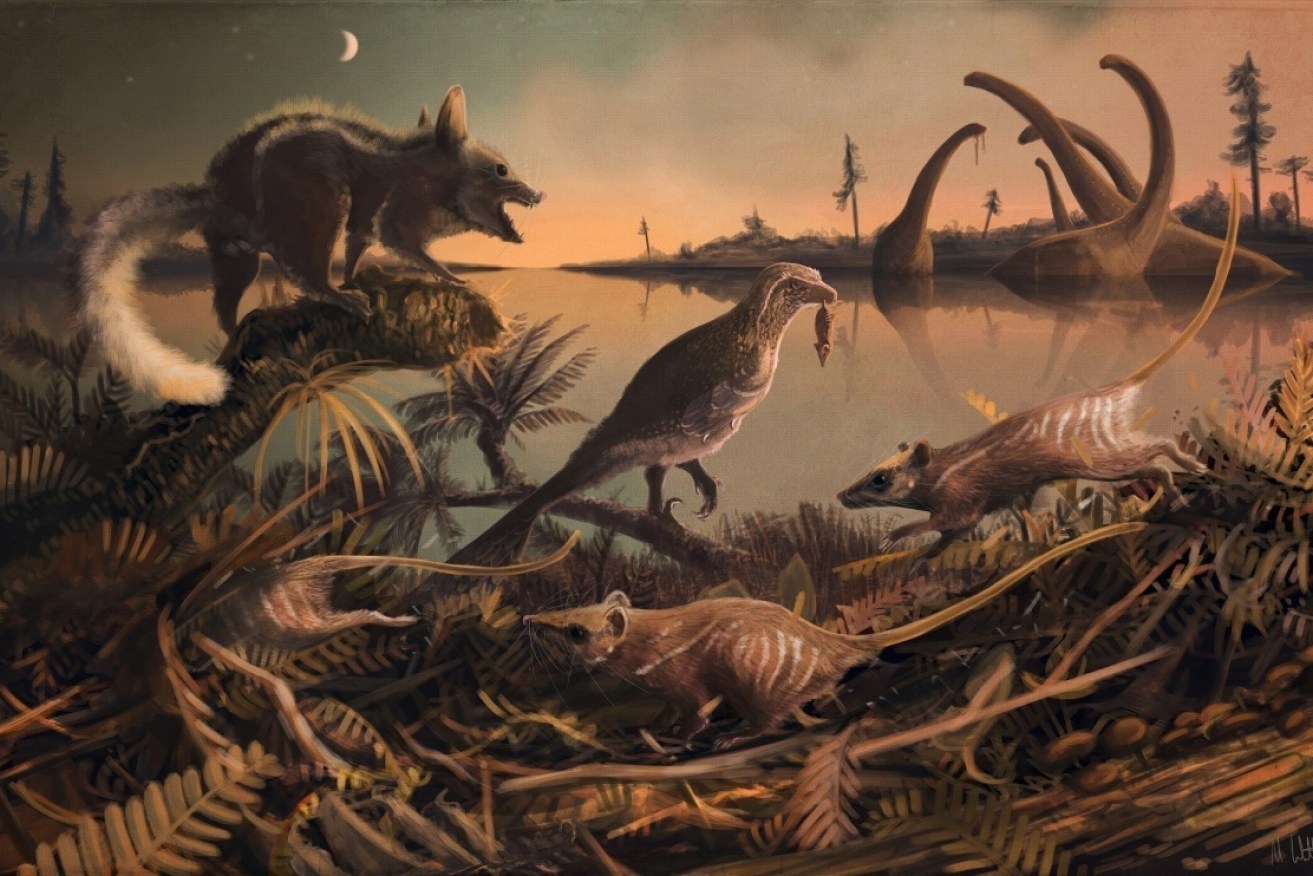Fossils of the oldest mammals related to humankind discovered on the Jurassic Coast of Dorset


The fossils are thought to be from creatures that existed 145 million years ago. Photo: AAP
Smell a rat in the family tree? Everybody has one, according to the newly discovered remains of mankind’s oldest known relative.
And to cement the connection to modern humans, the fossils of two small rat-like creatures – that scurried about 145 million years ago – were found near an English pub.
Our very distant cousins had a fraught life among the feet of dinosaurs. The University of Portsmouth, in a statement, called the find “the earliest undisputed fossils of mammals belonging to the line that led to human beings”.
The university said they are also the ancestors to “most mammals alive today, including creatures as diverse as the Blue Whale and the Pigmy Shrew”.
The discovery was made by an undergraduate palaeontology student who didn’t realise he was pushing the known boundaries of our genetic antiquity. Grant Smith was sifting through material on what’s known as the Dorset Jurassic coast, near the town of Swanage, when he found two unusual teeth.
His supervisor, Dave Martill, Professor of Palaeobiology, confirmed they were mammalian, but suggested Dr Steve Sweetman, an research fellow in ancient mammals, should see them.
Dr Sweetman found he’d been called in to identify remains of a type no one had ever seen before. He writes: “Grant was sifting through small samples of earliest Cretaceous rocks collected on the coast of Dorset as part of his undergraduate dissertation project in the hope of finding some interesting remains.
“Quite unexpectedly he found not one but two quite remarkable teeth of a type never before seen from rocks of this age. I was asked to look at them and give an opinion and even at first glance my jaw dropped!”
The discovery was a double treat, because the teeth came from two different species that lived side by side. Dr Sweetman said he believed the mammals were small, furry creatures and most likely nocturnal. One was a possible burrower, and probably ate insects; the larger may have eaten plants as well.
“The teeth are of a highly advanced type that can pierce, cut and crush food,” he writes.
“They are also very worn which suggests the animals to which they belonged lived to a good age for their species. No mean feat when you’re sharing your habitat with predatory dinosaurs!”
Please note Dr Sweetman’s repeated use of an exclamation mark – he’s that excited.
It’s known that dinosaurs were plagued by large flea-like creatures with a dagger-like proboscis that would have driven the giants mad – a discovery made in 2012. We can only speculate – but perhaps our rat-like relatives dined on these Jurassic fleas said to be three centimetres long.
Otherwise, there was a beautiful butterfly-looking insect to feast upon – an early lacewing. True butterflies came along 50 million years alter.
Of course, if our rat-like ancestors had been born much earlier, they may well have been carried off by hawk-sized dragonflies – and we Homo Sapiens might not have been born at all.
One of the new species has been named Durlstotherium newmani, christened after Charlie Newman, the landlord of the Square and Compass pub in Worth Matravers, close to where the fossils were discovered.
The findings were published this week in the journal Acta Palaeontologica Polonica, in a paper by Dr Steve Sweetman. Grant Smith’s name is also on the paper.








